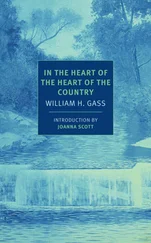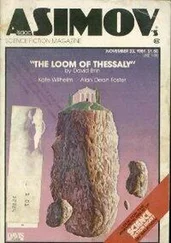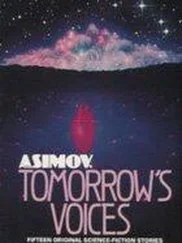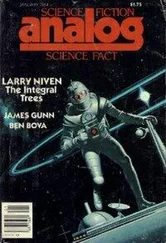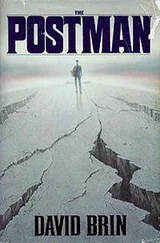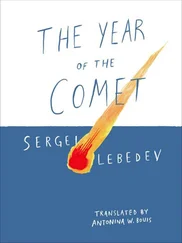“I believe I have figured out how the chambers got here in the first place,” Quiverian announced.
Saul looked back and forth from the display to Quiverian’s sallow, patrician features. His Roman nose enhanced the impression of a bird of prey. The image fit, the man was so unpredictable, excitable. Saul chose his words carefully.
“I thought that was already decided, Joao. The comet formed out of the primordial solar nebula, peppered with a lot of short-lived radioactives from a nearby supernova. Beta decay warmed parts of the interior, forming the cavities, while the outer shell—exposed to space—remained cool, a protective blanket around the molten regions.”
Quiverian waved his hand impatiently. “Yes, yes, that old theory. Aluminum 26 and other short-lived elements must surely have created some molten channels, for a time.”
“I’d started trying to develop a biogenesis model based on that idea. But now you say it’s no good anymore?”
Quiverian edged forward eagerly. “Radioactives can’t have provided sufficient heat for all the melting we’ve observed! And they don’t explain the extent of fractionation we find, either!”
“Fractionation?”
“The degree to which elements and minerals were separated from each other by some dynamic process, forming these ore bodies we’ve found everywhere. Saul, the radioactives theory just couldn’t explain that! You see? That is why I started digging around the literature for another method, another way it might have happened.”
Saul stood closer to the table. “Well, it sure sounds interesting, Joao. I was just telling Nick Malenkov that there didn’t seem to be enough—”
“Bear with me a minute, Saul.” Quiverian held up a hand as he shuffled through a pile of readouts. “There is something I want to show you. I have it here somewhere.”
“Take your time, Joao.” Saul shrugged. For now he was content to enjoy a momentarily clear head—the almond-flavored air was, for once, fresh in his nostrils. He watched the computer’s slowly rotating depiction of the comet’s nucleus.
Seismic studies had filled most of the three-dimensional map with a vague gray and white tracery, showing in blurry outlines the locations of many of the major faults and cavities. Still, essentially all but a small fraction of the rough globe remained mysterious—a realm to be explored over the long, quiet watches ahead. Less than five percent of the volume, centered on the north pole, was at all well known.
Piercing the north rotation axis was a narrow orange line marked SHAFT 1, which dropped a kilometer straight down to an ant colony of chambers labeled CENTRAL CONTROL COMPLEX—including this lounge and most of the science labs. That shaft continued inward another two kilometers or so, terminating, at last, less than halfway to the center of Halley Core.
Along the way, Shaft 1 met a series of horizontal tunnels, starting with red-colored “A” near the surface, passing green “F” here, where they now stood, and ending in yellow “N.”
The pattern was a lot less neat elsewhere. Several passages opened into big caverns that the spacers had discovered the hard way. Three huge chambers now held the fore sections of the slot tugs Sekanina , Whipple , and Delsemme , and the majority of the sleeping colonists. Another, near the surface, now held the Edmund Halley’s nearly reassembled gravity wheel.
The computer-generated graphics were good, showing even the field of storage tents scattered among the hummocks up on the north pole. A finely detailed model of a partly dismantled torch ship hung in miniature near the tiny, glittering Shaft 1 airlock, tethered to three mooring towers.
Saul shifted forward and saw that two tiny dots moved about near the Edmund Halley —infinitesimal human shapes … Captain Cruz and Spacer Tech Vidor were running inventory and writing up a task list for the next dozen year-and-a-half-long watches. The computer showed them at work, going over the ship in detail.
He imagined that if he climbed onto the table and peered up close, he would be able to make out the name-chops on the two spacers’ suit tabards, and maybe watch them gesture to each other.
Saul was used to computer representations in his work. He routinely “dove” visually into the cellular lifeforms he was studying. Still, he found this display marvelous. Anywhere within reach of the main computer’s scanners one could zoom in and see animated versions of the dozen active crewmen… reduced to stereotypes by the machine’s automatic privacy editor. Likewise, the private quarters were black cubes strung out along Tunnels E, F, and G, impervious to the exquisite simulation.
Spacers were used to living in enclosed volumes. In fact, to them all this room must seem wonderful. But to the civilians, like Saul, the colony looked a lot like an ant farm.
A fine lot of troglodytes we’ve become. Regular kobolds.
And yet I can’t see anything wrong with Miguel’s arrangements. Everything is moving along according to plan.
Knock on wood . Saul rapped the side of his head lightly, and smiled.
Even the predictable furor over his discovery had been less bother than expected. The communications time lag from Earth had let him stack media interviews together. The more hostile or sensationalist questions could just be “lost in transmission.” Saul saw definite advantages to making major discoveries far away from the madding crowd.
Now, if only he could figure out how it happened that primitive prokaryotic organisms were found frozen under the surface of an ancient ball of ice! Nobody had any idea how the tiny creatures had gotten there, let alone how they had lived.
“Found it!” Quiverian announced. He snatched up a flimsy sheet. “As I was saying, I was at a loss to explain all the signs of past melting we see here… until I came across a whole series of citations having to do with inductive heating during the sun’s T Tauri phase!”
“I beg your pardon?” Saul balanced forward on his toes, leaning lightly against the table.
Quiverian’s lips pursed. “Oh, they wouldn’t have included much stellar physics in your second-hat training, would they? Well, let me see if I can explain. T Tauri is the name of a certain very new star in the constellation of the Bull; a whole class of objects was named after it. Scientists have been studying them over a century. They’re a phase really, in the development of a young star. Our sun must have passed through the stage, early in the creation of the solar system.”
Quiverian laced his long fingers together and looked out into space, as if he was reciting from memory. “The most interesting feature of a T Tauri star is its truly incredible stellar winds—fluxes of hot protons and electrons, blown away from a star by sonic force and by electrical—”
“I know what the solar wind is, Joao,” Saul said mildly.
The other man’s eyes seemed to flash. “Good! But what you probably do not know is that during the sun’s own T Tauri period the winds must have been many thousands of times greater than they ever get now. And this particle current carried a truly magnificent magnetic field.”
Quiverian looked at him expectantly. But Saul could only shake his head. “I’m sorry, I don’t get it.”
The Brazilian shrugged in frustration. “Ignorant biologist! Can’t you see? The early protoplanets and comets all passed through this great magnetism as they circled round and round the newborn sun. Like wires turning in a great generator! Eddy currents! Resistance!”
“Ah, mazel !” Saul clapped his hands together. “You would get inductive heating.”
Quiverian sniffed. “So they did teach you something in Haifa, after all. Can you see now? Do you understand?”
Читать дальше

